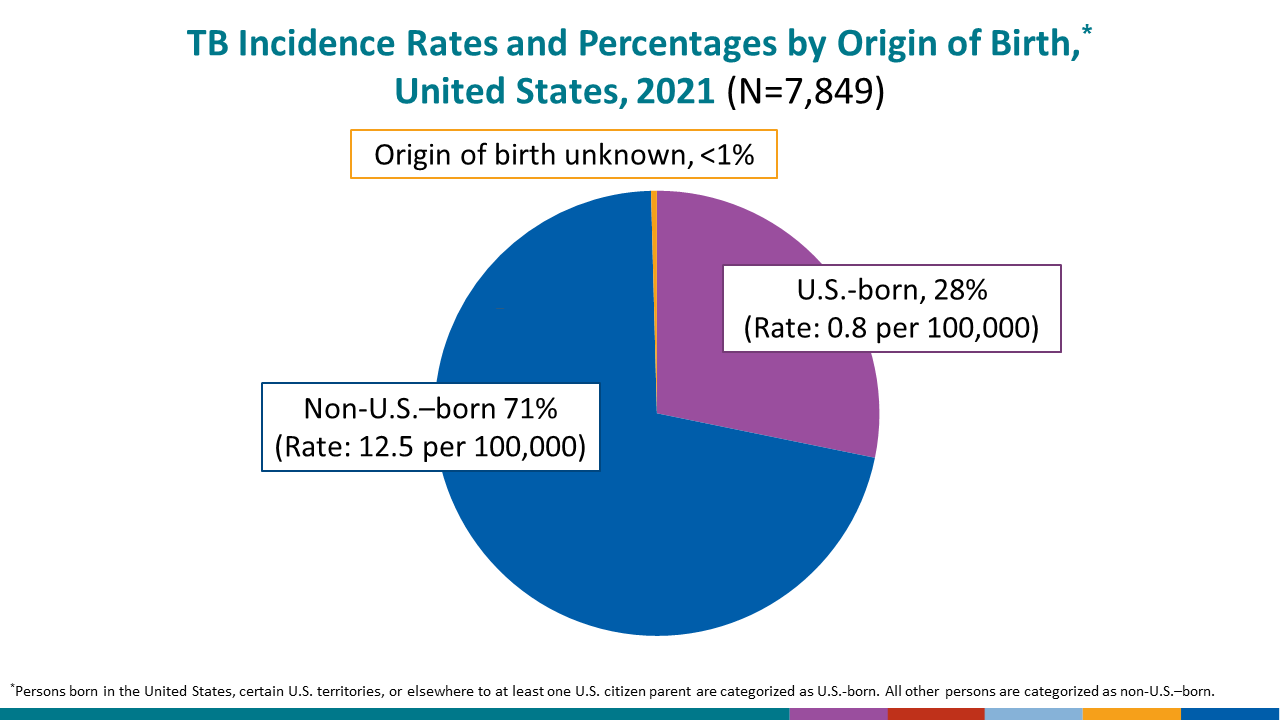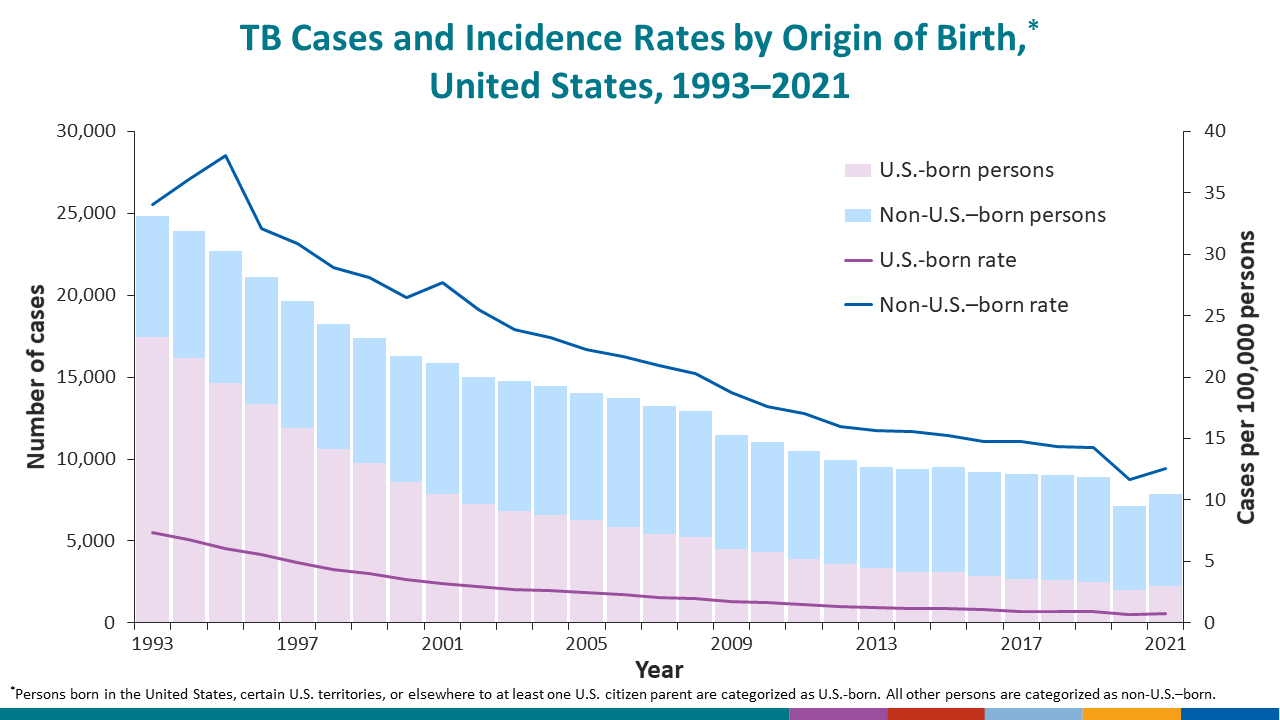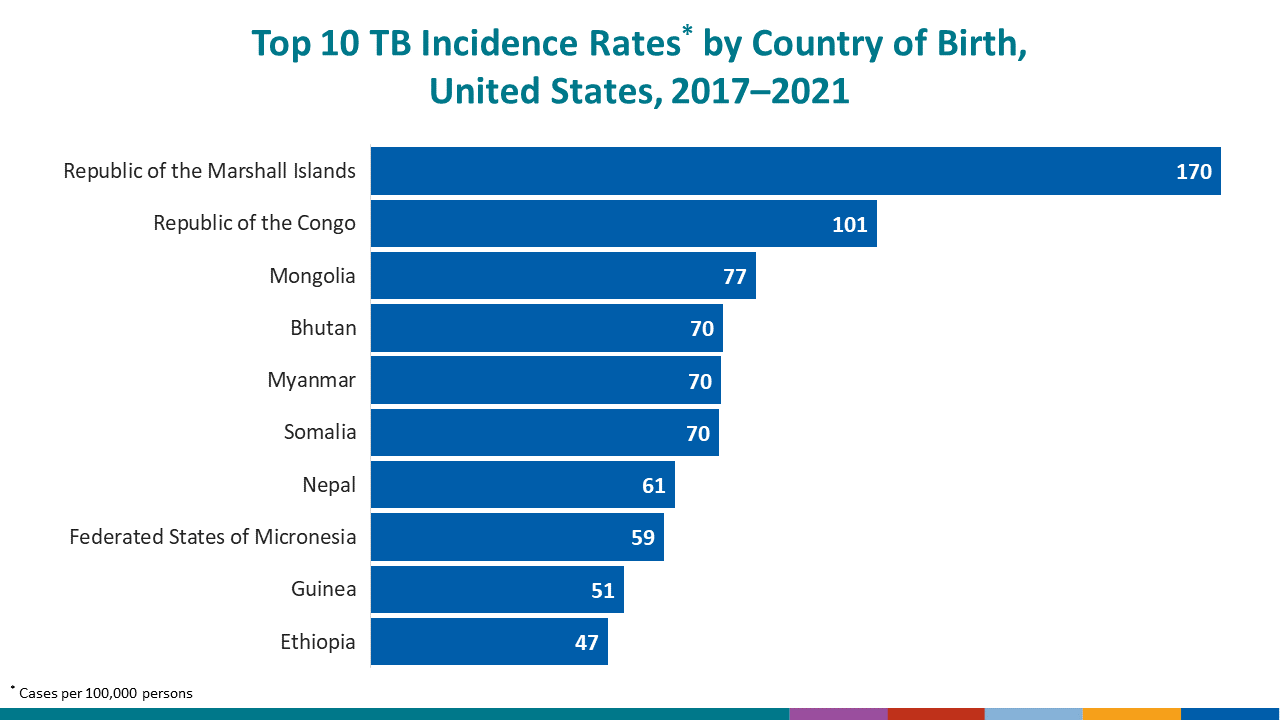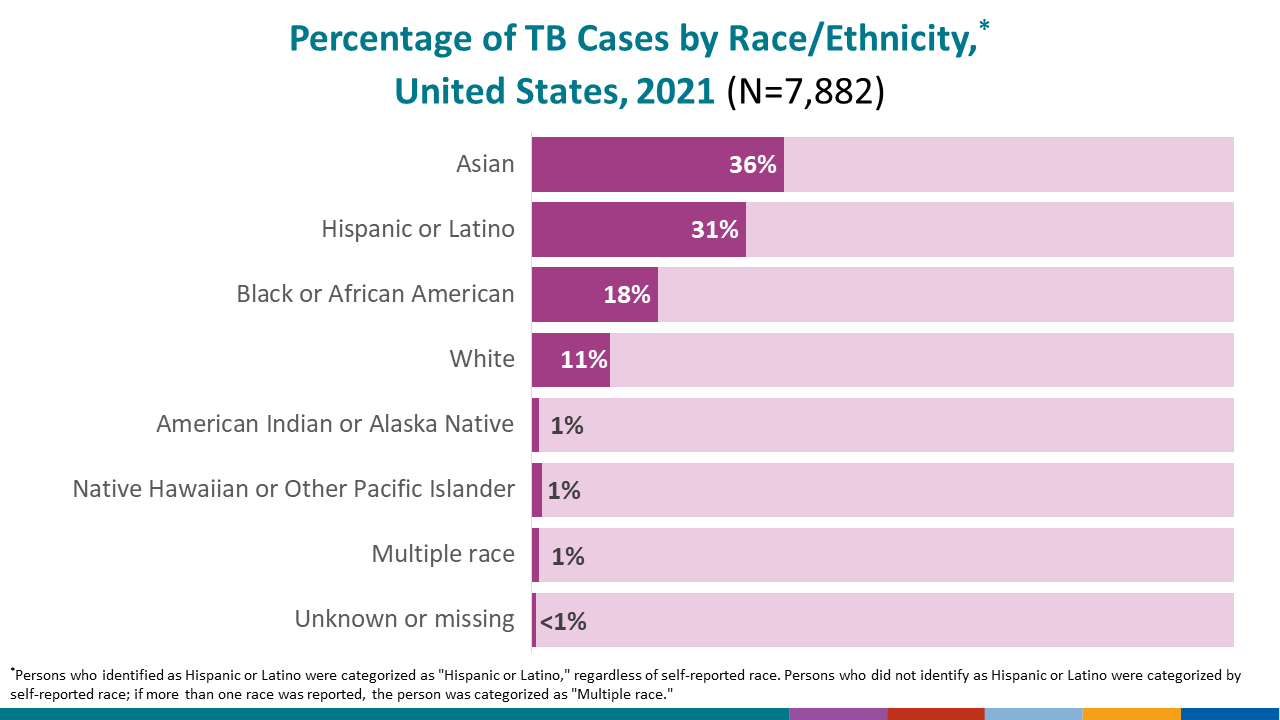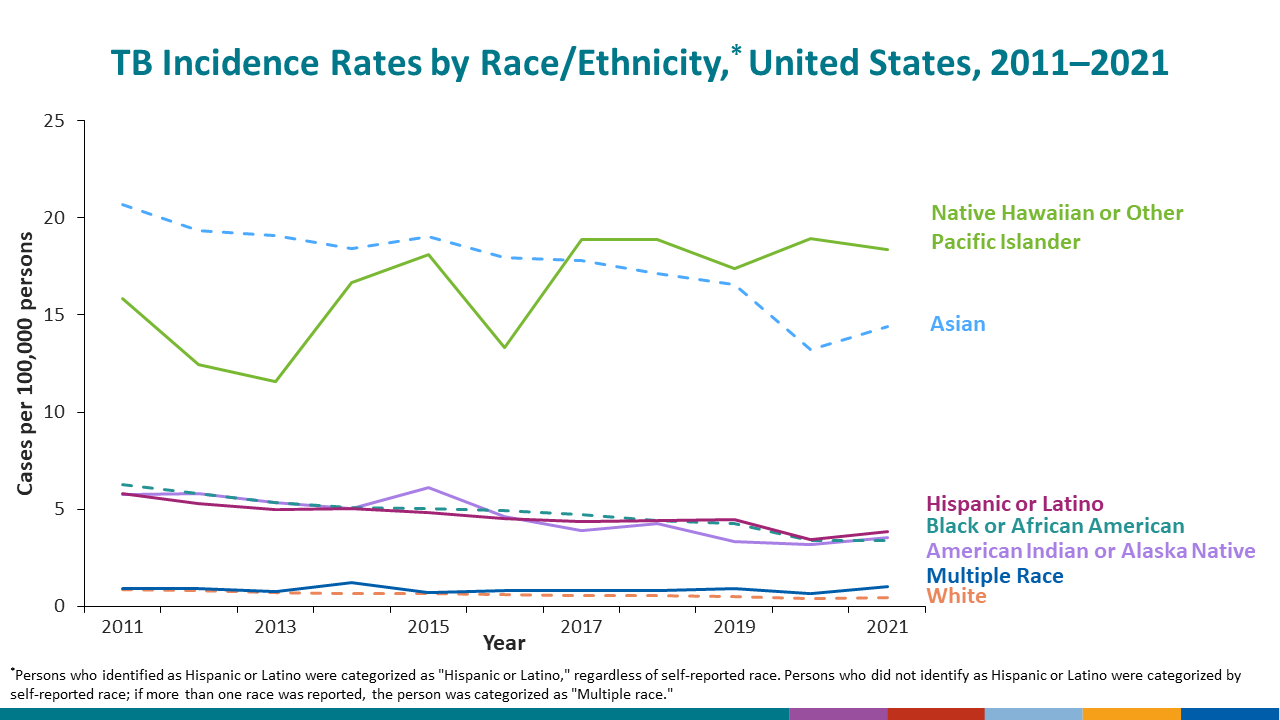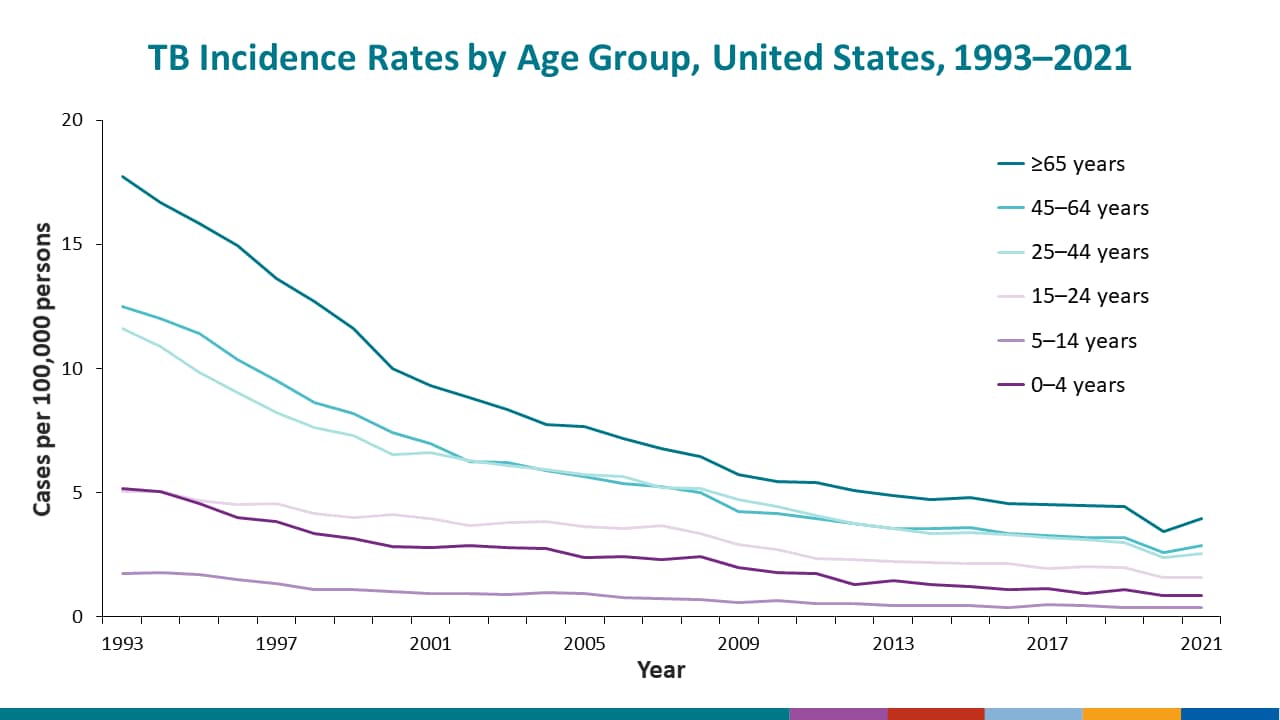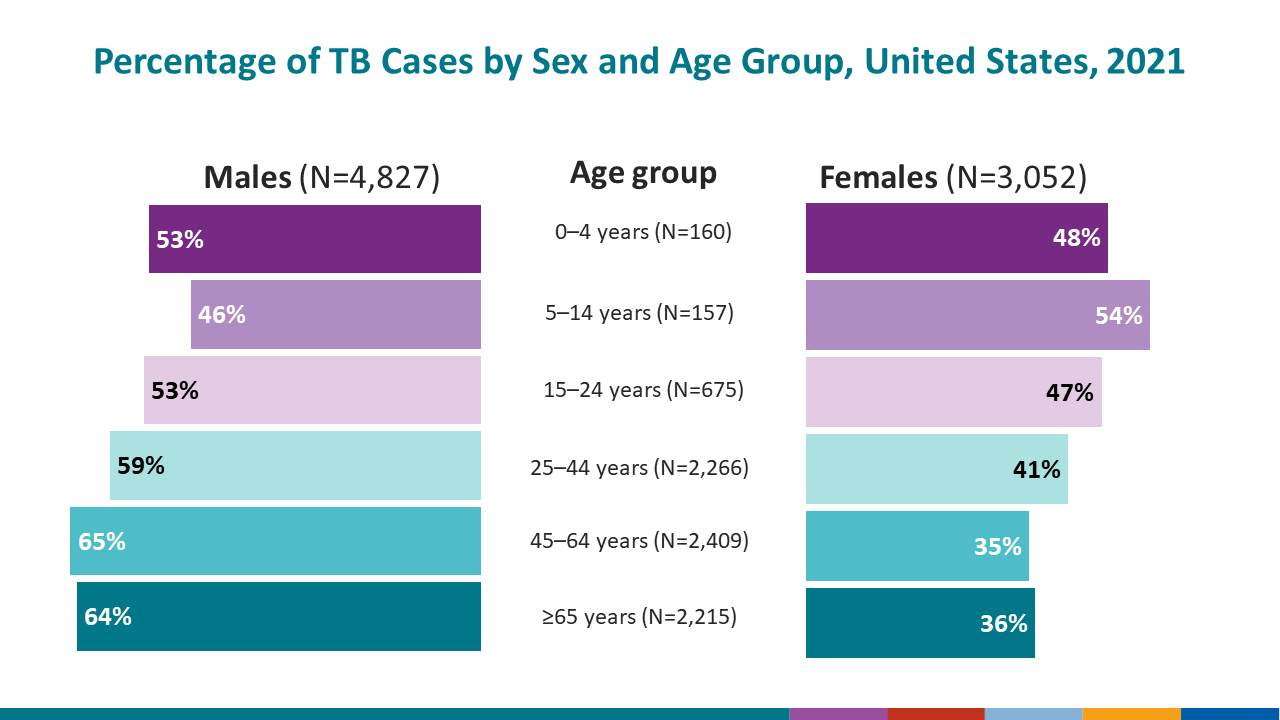Reported Tuberculosis in the United States, 2021
Demographics

Because of the substantially greater risk of exposure to TB outside of the United States, origin of birth is a prominent risk factor for TB in the United States.
Consistent with previous years, in 2021, the majority of reported TB cases occurred among non-U.S.–born persons (71.4%) (TB by Origin of Birth: 1993–2021).
Since 1993, the number of TB cases and TB incidence rates have declined among both U.S.-born and non-U.S.–born persons. However, those declines in TB have occurred disproportionately among U.S.-born persons, and the percentage of cases that occur among non-U.S.–born persons has increased steadily.
In 2021, the incidence rate was 15.8 times higher among non-U.S.–born persons (12.5 cases per 100,000 persons) than U.S.-born persons (0.8 cases per 100,000 persons).
Among non-U.S.–born persons with TB disease in 2021, the most common countries of birth included
- Mexico; 18.0%,
- the Philippines; 12.5%,
- India; 10.4%,
- Vietnam; 8.2%, and
- China; 5.1%.
Source: TB in the Top 30 Countries of Birth: 2016–2021
These countries have been the most common countries of birth among non-U.S.–born persons with TB since 2017, and they also represent substantial proportions of the non-U.S.–born population living in the United States.
Groups with relatively small populations in the United States can have high incidence rates (cases per 100,000 persons) despite constituting a relatively small proportion of the total number of TB cases reported. This is because incidence rates account for the size of the underlying population.
Among non-U.S.–born persons, the countries of birth with the highest U.S. incidence rates (cases per 100,000 persons from the country population living in the United States) of TB disease were
- the Republic of the Marshall Islands, 169.6
- the Republic of the Congo, 101.0
- Mongolia, 76.9
- Bhutan, 70.3
- Myanmar, 70.0
- Somalia, 69.6
Source: TB Rates in the United States by Country of Birth: 2016–2021
Anyone can get TB disease, but some groups are at increased risk for TB.
In 2021, persons with TB disease in the United States identified as
- Non-Hispanic Asian persons (36.0%)
- Hispanic or Latino persons (30.6%)
- Non-Hispanic Black or African American persons (18.0%)
- Non-Hispanic White persons (11.2%)
Source: TB by Race/Ethnicity: 1993–2021
Compared with 2020, TB incidence rates (cases per 100,000 persons) remained steady or increased for all race and ethnic groups except among Native Hawaiian or Other Pacific Islander persons (decreased from 6.2 cases per 100,000 persons in 2020 to 5.7 cases per 100,000 persons in 2021 for U.S.-born persons and from 35.4 cases per 100,000 persons in 2020 to 22.0 cases per 100,000 persons in 2021 for non-U.S.–born persons) and non-U.S.–born non-Hispanic Black persons (changed from 15.6 cases per 100,000 persons in 2020 to 15.2 cases per 100,000 persons in 2021).
Source: TB by Race/Ethnicity: 1993–2021
TB incidence rates are higher among adults than among children. Among persons 15 years and older, the incidence rates increase with age.
- Overall, in 2021, 4% of U.S. TB cases occurred among children younger than 15 years of age.
- Children ages 5–14 years had the lowest TB incidence rate (0.4 cases per 100,000 persons).
- Adults 65 years of age or older had the highest TB incidence rate in 2021 (4.0 cases per 100,000 persons).
- Incidence rates were steady or increased in 2021 compared with 2020 for all age groups except children 0 to 4 years, which changed from 0.9 in 2020 to 0.8 in 2021. However, compared with 2019, TB incidence rates in 2021 remained the same or lower for each age group (TB by Age Group: 1993–2021).
In 2021, male persons accounted for 61.3% of TB cases in the United States, including 62.6% of cases among U.S.-born persons and 60.7% of cases among non-U.S.–born persons.
Among U.S.-born persons in 2021, the incidence rate for male persons was higher than or the same compared with female persons in every age group.
Among non-U.S.–born persons, the incidence rates for female persons were higher at ages 5–14 (4.2 cases per 100,000) and 0–4 years of age (3.5 cases per 100,000) compared with males at those ages (2.3 cases per 100,000 and 2.9 cases per 100,000, respectively). For non-U.S.–born persons 15 years of age and older, the incidence rate for male persons was higher compared with females for each age group; the incidence rate for male persons 65 years and older (31.4 cases per 100,000) was double the incidence rate for female persons 65 years and older (15.0 cases per 100,000).
(TB by Origin of Birth, Sex and Age Group: 2021).
Learn more in the Executive Commentary.
- TB by Age Group: 1993–2021
- TB by Age Group Among U.S.-Born Persons: 1993–2021
- TB by Age Group Among Non-U.S.–Born Persons: 1993–2021
- TB by Birth Cohort Among U.S.-Born Persons: 1993–2021
- TB by Birth Cohort Among Non-U.S.–Born Persons: 1993–2021
- TB by Age Group: Reporting Areas, 2021
- TB by Origin of Birth, Sex and Age Group: 2021
